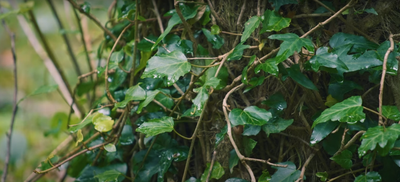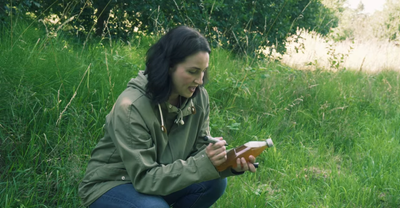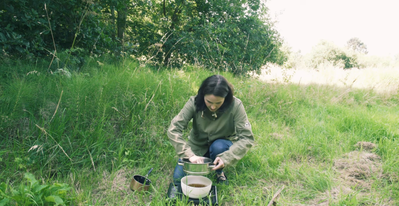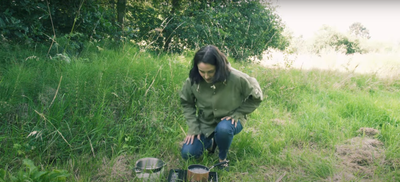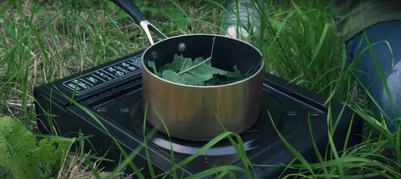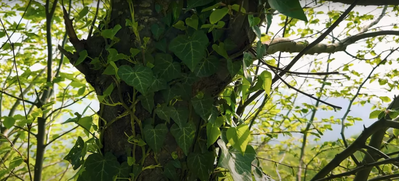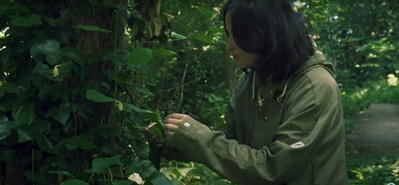Woodlands.co.uk explains how to make eco-friendly laundry soap from English Ivy.
Published:
Read Time: 3 mins
When looking for an eco-friendly way to tackle laundry stains, look no further than your local woodland. English Ivy (Hedera helix), a plant often found growing in abundance around the UK, can be transformed into an effective, natural laundry soap that’s as gentle on the environment as it is tough on stains. Here’s a step-by-step guide on how to make your laundry soap from this versatile plant, as shared by Nicola Kelleher for Woodlands.co.uk.
What You Need to Know Before Foraging
Before you head out to collect your English Ivy, it’s essential to take precautions:
- Wear Gloves: English Ivy can cause skin irritation for some people, so always wear gloves when handling it.
- Foraging regulations: Before collecting Ivy, check any local regulations, as there may be restrictions on gathering plants in certain areas.
A common myth about Ivy is that it stresses trees by putting pressure on their branches. However, Ivy does not actually cause them any harm. It’s a resilient plant that thrives in many conditions and is found in woodlands, gardens, and hedgerows throughout the UK.
English Ivy contains a substance known as Saponins, plant compounds with natural soap-like properties. These Saponins help to break down dirt and grime, making English Ivy a perfect ingredient for homemade laundry soap.
Step-by-Step Guide: How to Make English Ivy Laundry Soap
Step 1: Gather Your Ivy Leaves
Start by collecting 60 to 100 leaves. Select the younger, waxy, green leaves that are still growing upwards, rather than those that have fallen to the ground. These leaves contain the most Saponins, which are crucial for the soap-making process. Use scissors or secateurs to cut the leaves carefully, being mindful not to damage the surrounding plants. Ivy is hardy and will bounce back, so it’s a sustainable foraging option.
Step 2: Prepare and Simmer the Leaves
Once you have your leaves, it’s time to prepare them for soap-making. Wash the leaves thoroughly, then tear or cut them up to help release the Saponins.
Next, place the broken leaves in a pan and cover them with about 1 litre of water. Bring the mixture to a simmer, allowing it to cook for 15-20 minutes. This will help release the soap-like compounds into the water. Once the mixture has simmered, leave it overnight to steep and infuse.
After resting, strain the liquid through a colander to separate the leaves. The liquid should have a lovely colour and may bubble slightly, indicating the Saponins are working their magic. You can use the back of a spoon to push the leaves through the colander and extract as much of the soapy liquid as possible.
Step 3: Bottle and Label Your Eco-Friendly Soap
Once strained, decant your homemade laundry soap into any clean bottle or container. Be sure to label it clearly, especially if you plan to store it for later use.
Now your laundry soap is ready for use (3/4 cup per load)! The Ivy-based solution is tough on stains and works well for everyday laundry - it’s gentle, biodegradable, and a fantastic way to reduce the use of harsh chemicals in your home.
Why It’s Worth Trying
Making your laundry soap with English Ivy is not only eco-friendly but also a sustainable choice for the planet. Ivy grows all year round, so it’s always available to forage, and using it as a natural cleanser means avoiding unnecessary plastic bottles and harmful chemicals. Plus, it’s free – a perfect way to embrace sustainability while saving money.
Enjoy the process of foraging, making, and using this environmentally friendly cleanser straight from your local woodland
Ends
Editors notes
Founded with a mission to make woodland ownership accessible and enjoyable, Woodlands.co.uk offers private woodlands for sale across the UK. The company provides resources and guidance for new owners to explore creative ways of managing their woodlands for personal and community benefit. Whether for conservation, leisure, or environmental education, Woodlands.co.uk empowers individuals to steward and protect their woodlands for generations to come.
